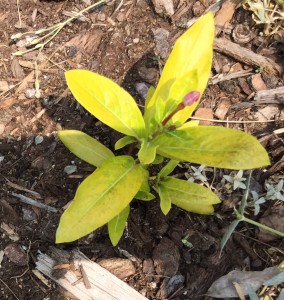Hello fellow readers,
Nancy of Fredon wrote, ‘Hi there gardening guru, I have a problem that seems to be an issue every year. My annual flowers do not do well in my perennial beds. They grow slowly or not at all and turn yellow. The same plants in a planter do just fine and my perennials are all growing well. Is it the soil pH? Am I under or overwatering? Help!’
First I must say, I hardly consider myself a gardening guru. Rather, a work-in-progress student of the earth. We are learning from each other, after all, beyond the lessons of the garden!
Generally, annuals prefer well-drained soil with a pH between 6.3 and 6.7. My guess is Nancy’s pH is fine as her perennials are flourishing. Most likely Nancy’s dilemma has to do with her annuals struggling to adapt to the real world.
Annuals are tender footed as they typically are grown in fluffy potting mix rather than good old dirt we respectively call garden soil. When plants are moved from their cushy conditions they often flounder. A workaround is to supplement the soil with good quality compost. And, before placing plants into the hole, gently break apart the root mass if they are pot bound. I call it tickling the roots to encourage them to spread quickly.
It’s often necessary to harden off your annuals to reduce plant stress. Most folk’s associate hardening off with seedlings grown inside that need to be transitioned to the outside. But the same is true of annuals because they start out in a controlled environment. Plants that are “soft” often have foliage that will transpire water (sweat) more quickly and therefore are prone to sunburn or yellowing leaves. And, wind can cause them to wilt even if the soil is moist. Of course, you must choose plants properly suited for your growing conditions of full or part sun or shade.
To help your new plants adapt to sunny conditions, first place them outside in a shady area for a few days. Then move the plants into the morning and late-day sun but protect them from the mid-day sun. After a week or so your plants should be ready to face the real world.
Yup. Plants, like people, handle stress a bit better once they develop a thicker skin.
Garden Dilemmas? askmarystone@gmail.com



